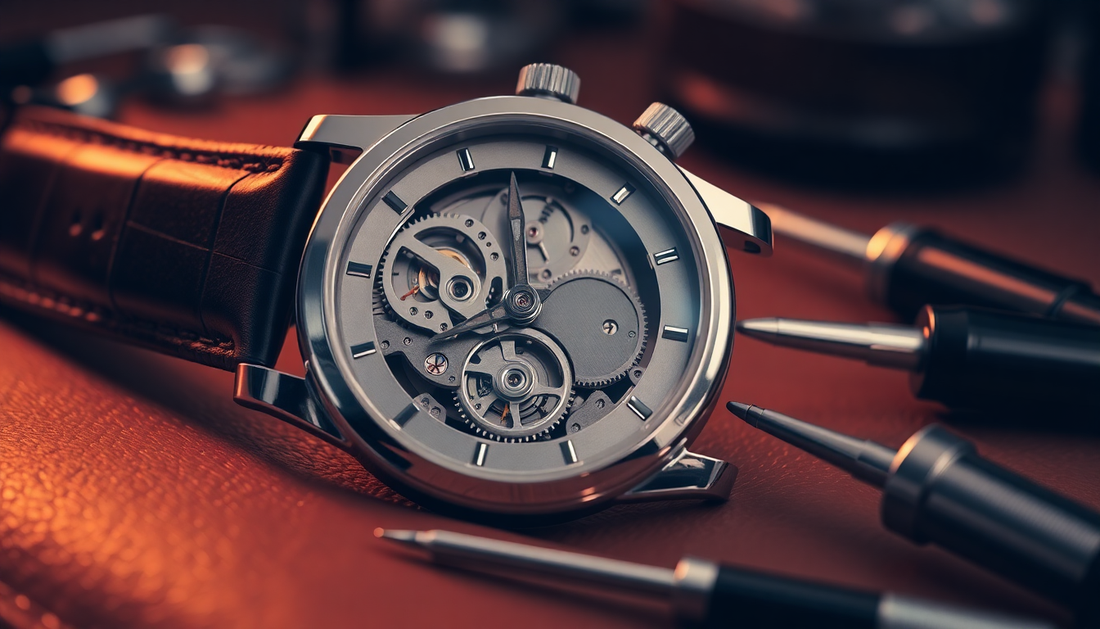
Mastering the Art of Automatic Watch Longevity: A Guide to Maintenance and Lifespan
Automatic watches have long been revered for their mechanical elegance and timeless appeal. These intricate timepieces, powered by the natural motion of the wearer's wrist, have captivated horologists and enthusiasts alike. However, to ensure your automatic watch continues to function flawlessly for years to come, proper maintenance and understanding its lifespan are crucial.
Understanding Automatic Watch Mechanics
At the heart of an automatic watch lies a complex mechanism that seamlessly converts the wearer's movements into the energy required to power the watch. The key components that make this possible include the rotor, mainspring, and a series of gears and jewels that work in harmony to keep time with precision.
As the wearer's wrist moves, the rotor spins, winding the mainspring. This stored energy is then gradually released, driving the watch's hands and ensuring accurate timekeeping. The intricate dance of these components is what gives automatic watches their distinctive charm and reliability.
Routine Maintenance Practices
To ensure your automatic watch continues to function at its best, regular servicing is essential. Experts recommend having your watch serviced every 3 to 5 years, depending on the manufacturer's recommendations and your personal usage patterns.
During a service, a professional watchmaker will disassemble the movement, clean and lubricate the components, and make any necessary adjustments to ensure optimal performance. This process not only keeps your watch running smoothly but also helps to identify and address any potential issues before they become more serious.
In addition to professional servicing, there are several steps you can take to maintain your automatic watch at home. Proper storage, such as keeping it in a watch winder or a soft, padded case, can help to prevent damage and maintain the mainspring's tension. Gentle cleaning with a soft, lint-free cloth can also help to keep the case and bracelet looking their best.
Factors Affecting Watch Lifespan
The lifespan of an automatic watch can be influenced by a variety of factors, both internal and external. The quality of the initial manufacturing, the materials used, and the overall design of the movement all play a crucial role in determining the watch's longevity.
Environmental factors, such as exposure to water, extreme temperatures, and magnetic fields, can also take a toll on an automatic watch's performance. Proper care and attention to these elements can help to extend the watch's lifespan and ensure it continues to function reliably.
Additionally, the frequency and intensity of use can impact an automatic watch's lifespan. Watches worn daily and subjected to more vigorous activity may require more frequent servicing than those worn occasionally or with a lighter touch.
Common Maintenance Mistakes to Avoid
One of the most common mistakes made by automatic watch owners is neglecting professional servicing. While it may be tempting to try to save money by skipping regular maintenance, this can ultimately lead to more costly repairs down the line. Ignoring the need for servicing can result in the gradual deterioration of the watch's components, potentially leading to irreparable damage.
Another mistake to avoid is improper handling of the watch. Automatic watches are delicate instruments and should be treated with care. Avoid exposing the watch to strong magnetic fields, sudden impacts, or excessive water pressure, as these can all compromise the watch's performance and longevity.
Extending Your Automatic Watch's Lifespan
By following a few simple guidelines, you can help to extend the lifespan of your automatic watch and ensure it continues to be a reliable and cherished companion for years to come. Regular professional servicing, proper storage and handling, and attention to environmental factors are all key to maintaining the health and performance of your automatic timepiece.
Additionally, being mindful of the watch's usage patterns and making adjustments as needed can help to prolong its lifespan. For example, if you find that your watch is losing or gaining time more quickly than usual, it may be a sign that it's time for a service.
When to Consider Watch Replacement
While with proper care and maintenance, many automatic watches can last for decades or even a lifetime, there may come a time when replacement is the best option. If the cost of repairing a watch exceeds its current value, or if the movement has suffered irreparable damage, it may be more practical to invest in a new automatic timepiece.
Ultimately, the decision to replace an automatic watch should be based on a careful cost-benefit analysis, taking into account the watch's sentimental value, the availability of replacement parts, and the overall condition of the movement.
Conclusion
Owning an automatic watch is a true pleasure, but it also comes with the responsibility of proper care and maintenance. By understanding the mechanics of your timepiece, following a regular servicing schedule, and being mindful of environmental factors, you can help to ensure your automatic watch continues to function flawlessly for years to come.
Remember, the key to a long-lasting automatic watch is a combination of professional expertise and personal attention. With the right approach, your timepiece can become a cherished heirloom, a testament to the enduring beauty and precision of mechanical watchmaking.
